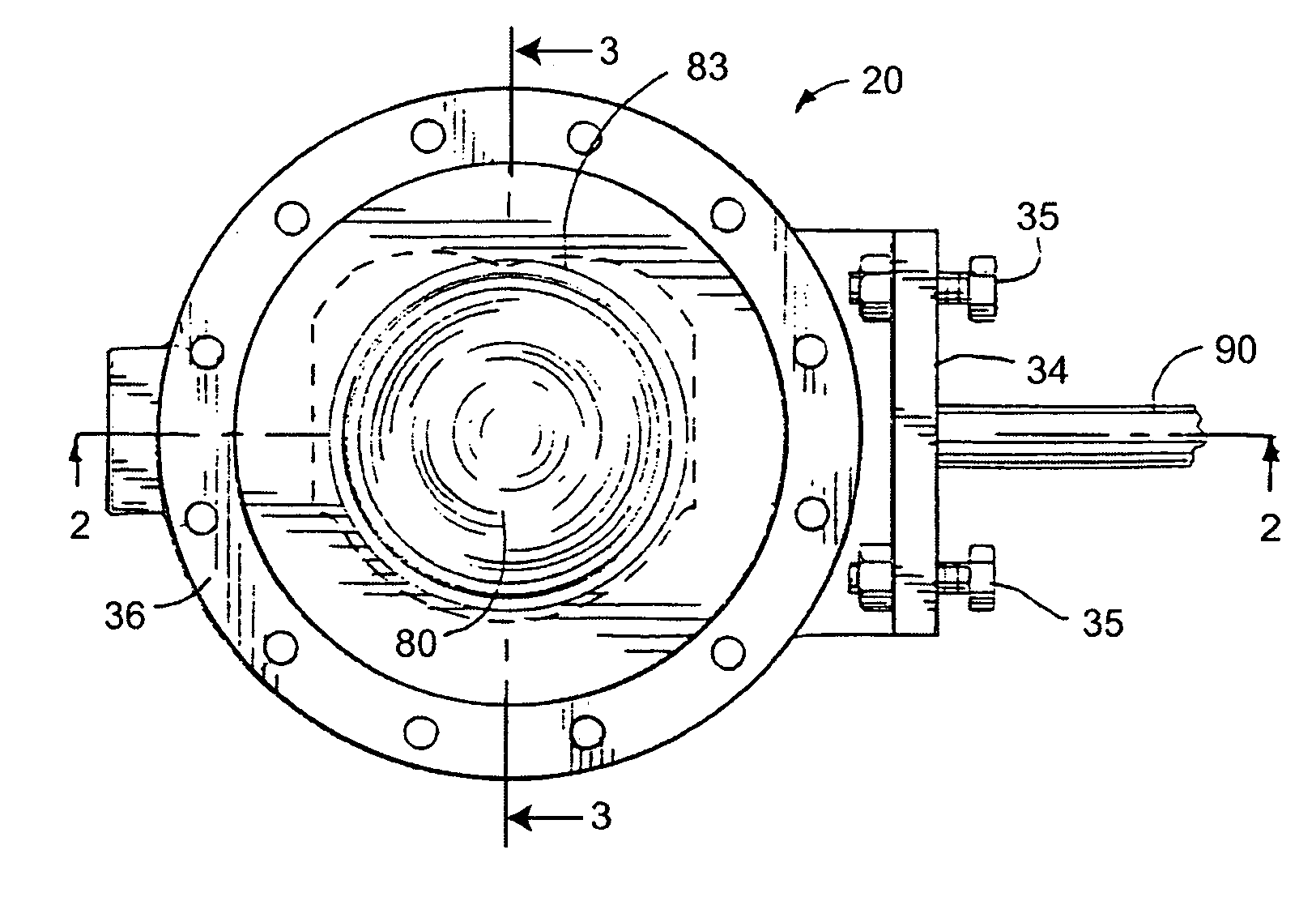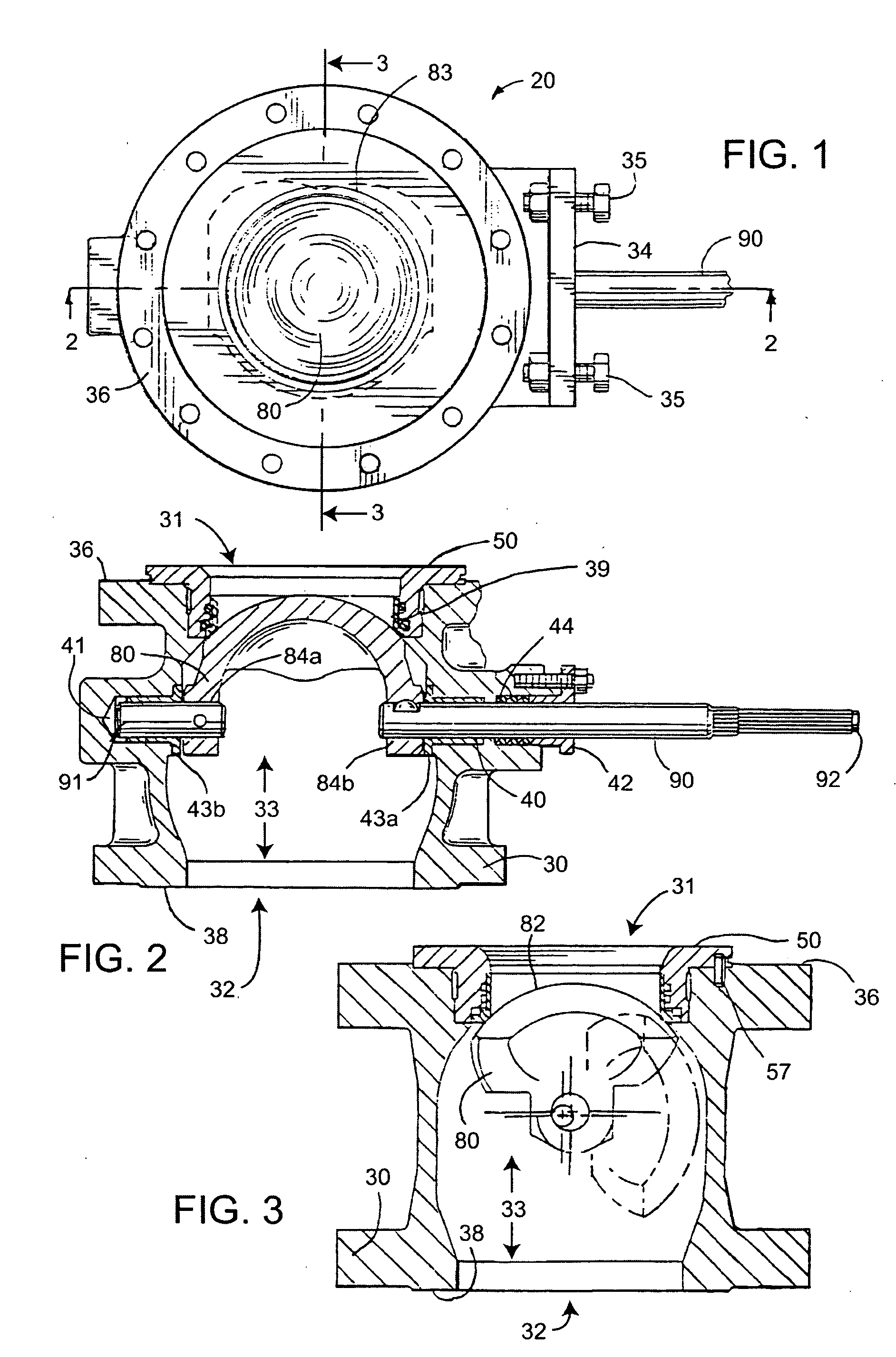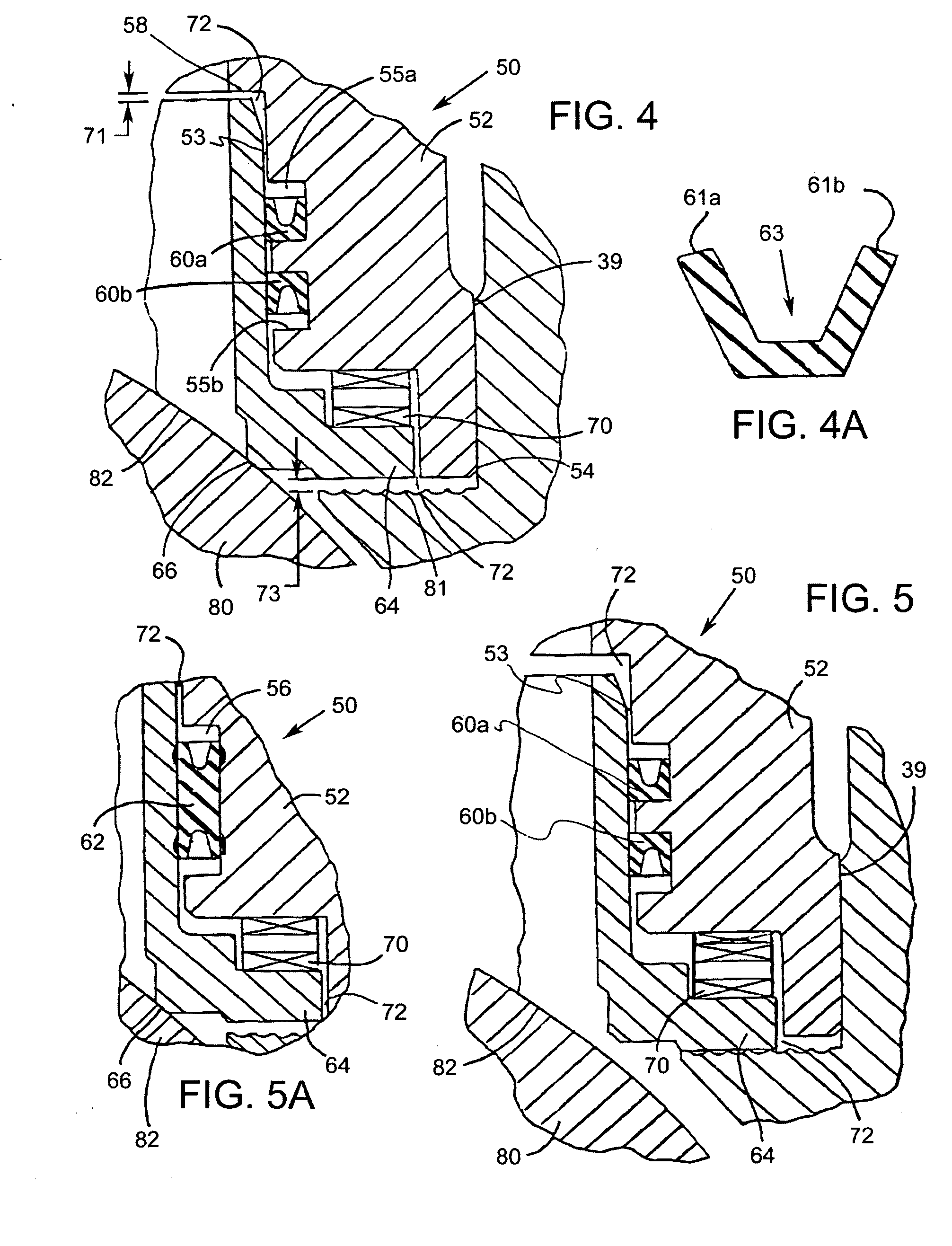Fluid flow control valve with high temperature bi-directional shutoff
a flow control valve and high temperature technology, applied in the field of fluid valves, can solve the problems of increasing frictional forces between the ball element and the sealing assembly, affecting the life of the valve components, and affecting the operation of the valv
- Summary
- Abstract
- Description
- Claims
- Application Information
AI Technical Summary
Problems solved by technology
Method used
Image
Examples
Embodiment Construction
[0024] Referring now to the drawings, and with specific reference to FIGS. 1-3, a ball valve constructed in accordance with the teachings of the disclosure is generally depicted by reference numeral 20. As shown therein, the ball valve 20 includes a housing 30 having a primary flowpath 33 between an inlet 31 and an outlet 32, a seal assembly 50 and a ball element 80 mounted on rotatable shafts 90 and 91.
[0025] The housing 30, generally having a cylindrical shape, defines the primary flowpath 33 for a fluid traveling therethrough. At the bottom of the housing 30, as oriented in FIG. 2, is the outlet 32, of the primary flowpath 33, the outlet 32 being surrounded by an outlet flange 38. In the middle portion of the housing 30, a thru hole 40 penetrates the right wall of the housing 30, and a blind hole 41 opens to the interior of the housing 30, both holes 40 and 41 being concentric to each other and adapted to receive the shaft 90 and 91, respectively. Disposed between the drive shaf...
PUM
 Login to View More
Login to View More Abstract
Description
Claims
Application Information
 Login to View More
Login to View More - R&D
- Intellectual Property
- Life Sciences
- Materials
- Tech Scout
- Unparalleled Data Quality
- Higher Quality Content
- 60% Fewer Hallucinations
Browse by: Latest US Patents, China's latest patents, Technical Efficacy Thesaurus, Application Domain, Technology Topic, Popular Technical Reports.
© 2025 PatSnap. All rights reserved.Legal|Privacy policy|Modern Slavery Act Transparency Statement|Sitemap|About US| Contact US: help@patsnap.com



